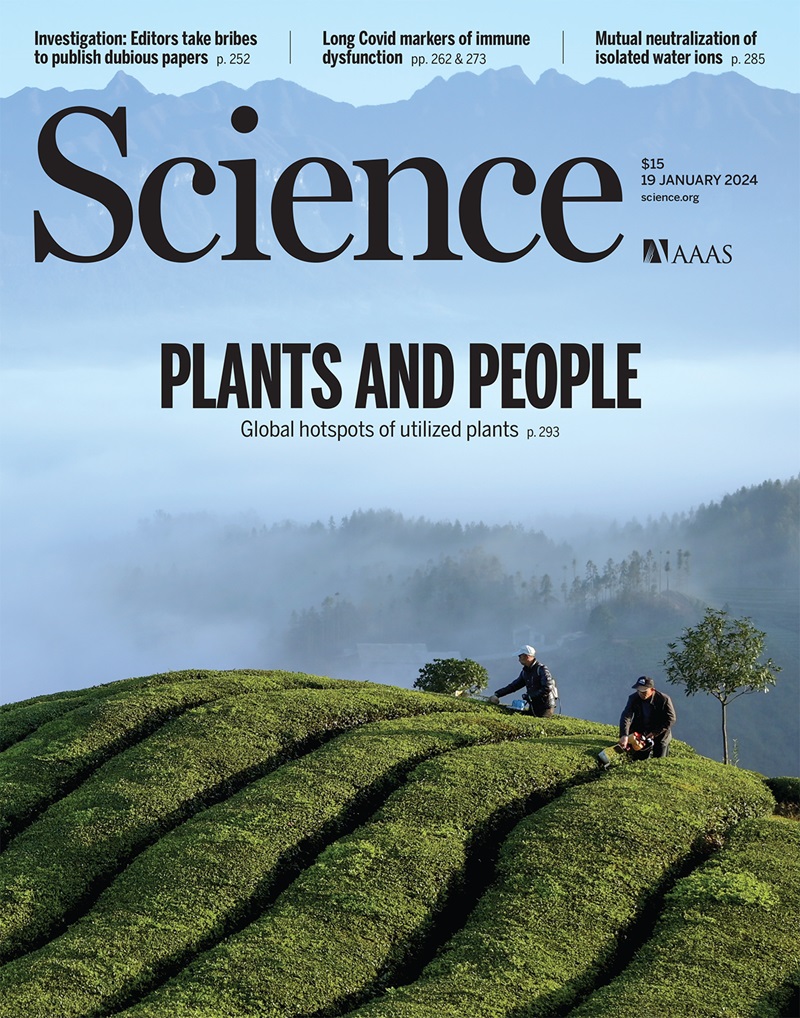Fluorine-free strongly dipolar polymers exhibit tunable ferroelectricity
IF 44.7
1区 综合性期刊
Q1 MULTIDISCIPLINARY SCIENCES
引用次数: 0
Abstract
Current research on ferroelectric polymers centers predominantly on poly(vinylidene fluoride) (PVDF)–based fluoropolymers because of their superior performance. However, they are considered “forever chemicals” with environmental concerns. We describe a family of rationally designed fluorine-free ferroelectric polymers, featuring a polyoxypropylene main chain and disulfonyl alkyl side chains with a C3 spacer: −SO2CH2CHRCH2SO2− (R = −H or −CH3). Both experimental and simulation results demonstrate that strong dipole-dipole interactions between neighboring disulfonyl groups induce ferroelectric ordering in the condensed state, which can be tailored by changing the R group: ferroelectric for R = −H or relaxor ferroelectric for R = −CH3. At low electric fields, the relaxor polymer exhibits electroactuation and electrocaloric performance comparable with those of state-of-the-art PVDF-based tetrapolymers.
无氟强偶极聚合物表现出可调谐的铁电性
目前对铁电聚合物的研究主要集中在聚偏氟乙烯(PVDF)基含氟聚合物上,因为它们具有优异的性能。然而,由于环境问题,它们被认为是“永远的化学物质”。我们描述了一个合理设计的无氟铁电聚合物家族,具有聚氧丙烯主链和二磺酰烷基侧链和C3间隔:−so2 ch2 chrch2 so2−(R =−H或−ch3)。实验和模拟结果均表明,相邻二磺酰基之间的强偶极子-偶极子相互作用在凝聚态下诱导铁电有序,这可以通过改变R基团来调整:R = - H时为铁电,R = - CH 3时为弛豫铁电。在低电场下,弛豫聚合物表现出与最先进的pvdf基四聚物相当的电致动和电热性能。
本文章由计算机程序翻译,如有差异,请以英文原文为准。
求助全文
约1分钟内获得全文
求助全文
来源期刊

Science
综合性期刊-综合性期刊
CiteScore
61.10
自引率
0.90%
发文量
0
审稿时长
2.1 months
期刊介绍:
Science is a leading outlet for scientific news, commentary, and cutting-edge research. Through its print and online incarnations, Science reaches an estimated worldwide readership of more than one million. Science’s authorship is global too, and its articles consistently rank among the world's most cited research.
Science serves as a forum for discussion of important issues related to the advancement of science by publishing material on which a consensus has been reached as well as including the presentation of minority or conflicting points of view. Accordingly, all articles published in Science—including editorials, news and comment, and book reviews—are signed and reflect the individual views of the authors and not official points of view adopted by AAAS or the institutions with which the authors are affiliated.
Science seeks to publish those papers that are most influential in their fields or across fields and that will significantly advance scientific understanding. Selected papers should present novel and broadly important data, syntheses, or concepts. They should merit recognition by the wider scientific community and general public provided by publication in Science, beyond that provided by specialty journals. Science welcomes submissions from all fields of science and from any source. The editors are committed to the prompt evaluation and publication of submitted papers while upholding high standards that support reproducibility of published research. Science is published weekly; selected papers are published online ahead of print.
 求助内容:
求助内容: 应助结果提醒方式:
应助结果提醒方式:


